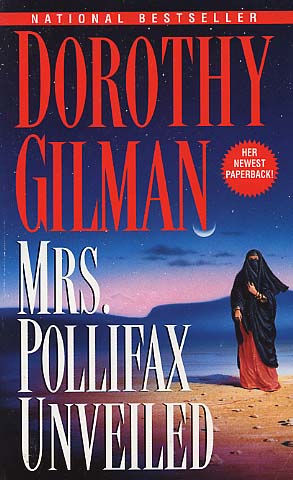
is shown to a waiting room in the new CIA headquarters at the same time a legitimate applicant is expected. Because, of course, way forward in the future here-and-now, we actually understand that suicide is a real and sadly common event.Īt any rate, then it takes off rather nicely, semi-plausibly ( 1966, people, 1966), with a typical mistaken-identity thing: Mrs. But it was a bit disconcerting reading such exposition, and to then switch into ‘applying-to-be-a-spy” mode. P’s extreme emotion and not something played for laughs. I think, back then, it must have been meant by the author as representing Mrs. Pollifax contemplating the recent occasion she contemplated suicide. We aren’t meta-navel-gazers yet, people there’s very little post-mod nod-send-up here. Gilman’s elevator pitch was to take James Bond out of the picture, and put an adorable little white-haired grandmother in it.

Lots of Cold War spy drama, if I remember my James Bond movies correctly. Published in 1966, it certainly speaks to simpler times, or perhaps different times. Pollifax? She’s unabashedly enthusiastic about travel and about meeting people from other cultures. Her life experiences and common sense are an asset in the spy game, and she uses her age to her advantage.Read February 2019 Recommended for people who like traveling in the 60s ★ ★ ★ More than once, the script touches on society’s disrespect for senior citizens, and part of Emily’s appeal is that she is not easily dismissed. Megginson’s plot conveys the positive notion that not only is there life after 60, but an exciting and rewarding one at that. Here the CIA is run more like F-Troop, with upper management first mistaking Emily as an agent, then losing her on assignment and finally inadvertently issuing a hit on her life. Gilman has created an endearing character in the feisty Emily Pollifax, but the pic leans more toward fantasy than mystery. An expert at identifying birds and plants from her years with her garden club, she is able to provide important clues for an escape plan.Īfter a breakout and a few double- and triple-crosses, Emily is on her way home when, acting on a hunch, she follows a suspect to a posh hotel in Switzerland and the intrigue starts flying anew. While held captive, the seriously wounded Jack is forced to rely on his unlikely accomplice, and Emily is more than up to the task. The milk run turns sour when Emily and Jack are taken hostage by a mysterious enemy. When headquarters realizes the goof, it dispatches superagent Jack Farrell (Thomas Ian Griffith) to tail her as a precaution.


The covert job is considered a “milk run” - an easy task that involves posing as a tourist and picking up a book containing an encrypted message. An earnest letter to her congressman wins her an interview at the CIA, where a case of mistaken identity sends her to Morocco on her first assignment.


 0 kommentar(er)
0 kommentar(er)
